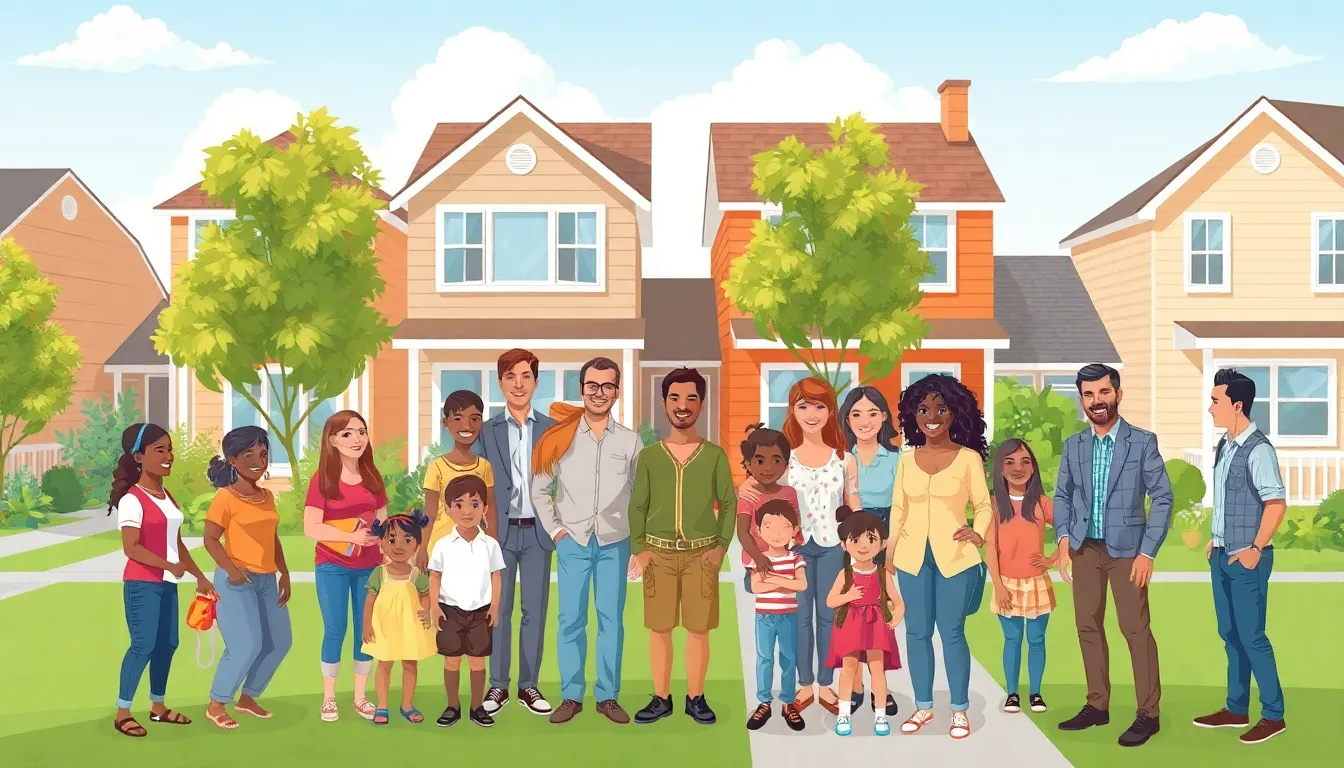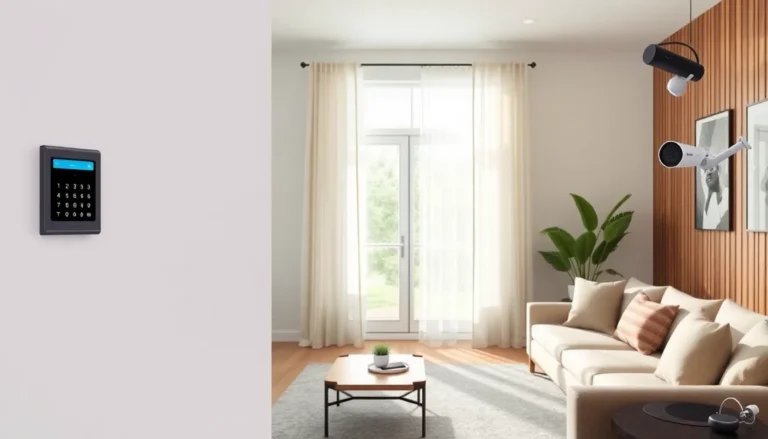In a world where avocado toast can cost more than a down payment, the quest for affordable housing feels like a game of hide-and-seek. Everyone’s playing, but few are winning. With soaring rents and mortgage rates that make you question your life choices, it’s no wonder many are left wondering if they’ll ever find a place to call home without selling a kidney.
Table of Contents
ToggleOverview of Affordable Housing
Affordable housing provides essential shelter for individuals and families seeking suitable living conditions without excessive financial strain. According to the U.S. Department of Housing and Urban Development, housing is considered affordable when it costs no more than 30% of a household’s gross income. Many low and moderate-income individuals face obstacles in accessing such housing due to rising market prices.
In recent years, rent prices in urban areas have skyrocketed, leaving many unable to afford basic accommodations. High mortgage rates similarly create barriers for potential homeowners, forcing them to remain tenants despite their aspirations. The increasing demand for affordable units compounds these issues, often outpacing supply.
Various organizations and government programs exist to ease this burden. Nonprofits advocate for policy changes and provide financial support, while local and state programs offer rental assistance and subsidies. Additionally, developers are encouraged through incentives to build more affordable units, helping to address shortages.
Communities benefit from affordable housing as it fosters diversity and stability. When residents can afford their homes, they contribute to local economies and enhance neighborhood resilience. Supporting affordable housing initiatives not only helps individuals but strengthens communities, empowering everyone to thrive.
Importance of Affordable Housing

Affordable housing plays a crucial role in sustaining healthy communities. It promotes stability and economic growth while addressing social inequalities.
Economic Benefits
Affordable housing supports local economies. It allows families to allocate funds towards essential expenses, such as education and healthcare. Lower housing costs increase disposable income, driving consumer spending in the community. Research indicates that each affordable unit developed generates significant economic activity, creating jobs and stimulating local businesses. Furthermore, stable housing improves workforce productivity. Workers with secure homes demonstrate higher job performance, contributing more effectively to their workplaces. Communities with adequate affordable units also attract diverse industries, stimulating further economic development.
Social Benefits
Social equity and inclusion significantly improve with affordable housing. Access to affordable homes enables families to build wealth and secure stable futures. Children raised in stable environments perform better academically, contributing to a more educated populace. Communities benefit from reduced crime rates as affordable housing enhances safety and cohesion. Social services become more effective when families secure stable housing, and access to health resources increases as residents establish a strong community foundation. Overall, promoting affordable housing fosters resilience, enhances community ties, and supports a diverse and vibrant social fabric.
Challenges in Affordable Housing
Finding affordable housing faces numerous challenges in today’s economic climate. Several factors limit access and increase the burden on families.
Funding Issues
Funding issues often impede the development of affordable housing. Limited budgets restrict local and state governments from investing in housing projects. Nonprofits frequently struggle to secure grants, which exacerbates the problem. Developers encounter difficulties accessing loans that prioritize affordable units. Many programs meant to assist low-income families lack adequate financial backing. Consequently, the gap between demand for affordable housing and available funding grows wider.
Zoning Regulations
Zoning regulations create additional hurdles for affordable housing initiatives. Many local governments enforce strict zoning laws that limit housing density. Such regulations often favor single-family homes over multifamily developments. Developers can’t maximize land use due to these constraints, leading to fewer units. Community resistance to new projects further complicates zoning changes. In many cases, nimbyism prevents necessary adjustments that could alleviate shortages.
Successful Affordable Housing Models
Affordable housing models demonstrate innovative solutions to pressing housing needs. Examining successful examples reveals effective strategies that can be implemented in various communities.
Case Studies
The National Housing Trust’s efforts in Washington, D.C. illustrate a successful preservation model. They transformed an old apartment building into affordable units, ensuring long-term affordability for low-income families. New York City’s “Housing New York 2.0” initiative aims to create and preserve 300,000 units by 2026. This program focuses on mixed-income developments to foster inclusivity. Minneapolis adopted a progressive zoning approach by permitting multifamily housing in previously single-family zones. These case studies showcase diverse methods, proving that tailored solutions drive positive outcomes in affordable housing.
Lessons Learned
Emphasizing community involvement fosters support for new projects. Engaging local residents in the planning process builds trust and transparency. Combining public and private funding sources effectively enhances financial feasibility. Collaborating with nonprofits often results in innovative financing solutions. Streamlining zoning regulations removes barriers and accelerates project timelines. Each successful model demonstrates a unique combination of strategies, highlighting the importance of adaptability in addressing local housing challenges.
Future of Affordable Housing
The future of affordable housing demands a focus on innovation and policy reform. Addressing the growing crisis requires collaborative efforts among various sectors.
Innovative Solutions
Innovative solutions play a crucial role in expanding access to affordable housing. Community land trusts promote long-term affordability by keeping land ownership separate from housing. These trusts empower residents and preserve homes for low-income families. Micro-apartments offer another solution by maximizing limited space and providing affordable living options. Furthermore, adaptive reuse of existing structures, such as converting warehouses into housing, increases available units while preserving community character. Public-private partnerships can also fund development, combining resources and expertise. Success stories demonstrate that creative approaches can meet needs more effectively, transforming challenges into opportunities.
Policy Recommendations
Policy recommendations aim to create favorable conditions for affordable housing. Zoning reforms should accommodate diverse housing types, allowing for higher density in appropriate areas. Support for inclusionary zoning mandates developers to include affordable units in new projects. Additionally, increasing funding for housing programs through state and federal sources can enhance support for low-income individuals. Providing incentives for developers to build affordable housing can stimulate production, combating the current shortfall. Streamlining permitting processes reduces delays and lowers development costs. Finally, fostering tenant protections can stabilize vulnerable populations, ensuring security in their homes. Collectively, these strategies strengthen the foundation for accessible and sustainable affordable housing.
Affordable housing remains a critical issue that affects countless individuals and families. The ongoing struggle to secure affordable homes highlights the need for innovative solutions and effective policy reforms. By fostering community engagement and encouraging collaboration among various stakeholders, it’s possible to create a more inclusive housing landscape.
As cities evolve and populations grow, the urgency to address these challenges becomes increasingly clear. Emphasizing the importance of affordable housing not only promotes economic stability but also enhances social equity. With the right strategies in place, communities can thrive, providing residents with the secure and supportive environments they deserve. The path forward requires commitment and creativity to ensure that everyone has access to safe and affordable housing.



